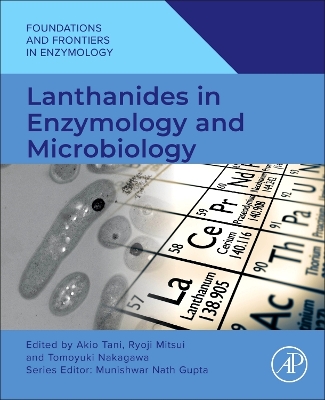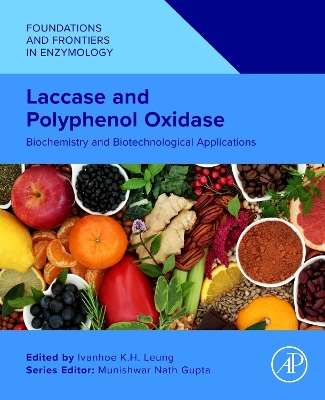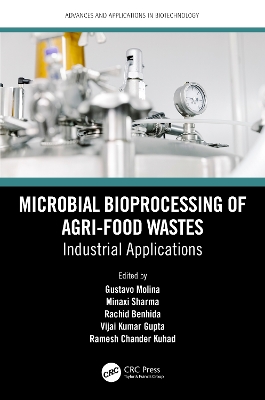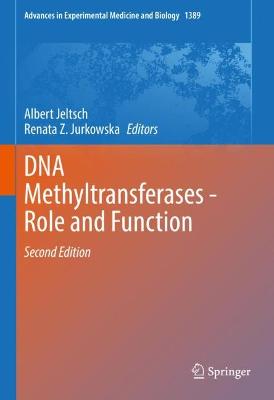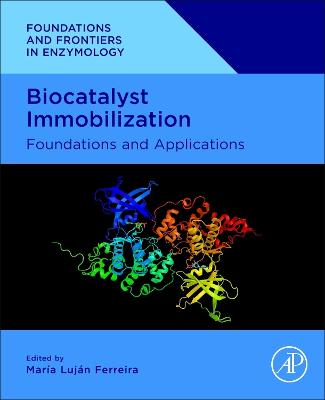Structure and Intrinsic Disorder in Enzymology
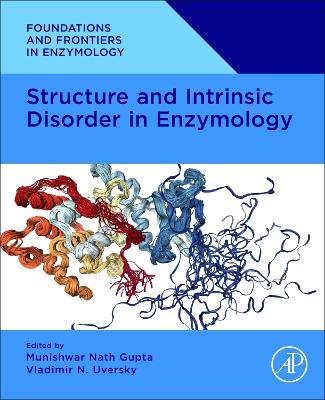 -10%
portes grátis
-10%
portes grátis
Structure and Intrinsic Disorder in Enzymology
Uversky, Vladimir N.; Gupta, Munishwar Nath
Elsevier Science & Technology
11/2022
528
Mole
Inglês
9780323995337
15 a 20 dias
Descrição não disponível.
1. Enzymology: Early insights 2. Deep mutational scanning to probe specificity determinants. 3. Protein flexibility and cryo-enzymology: The trade-off between stability andcatalytic rates 4. Thermodynamic Perspective of Protein Disorder and Phase Separation: Model Systems 5. Structure and disorder: Protein functions depend on this new binary transforming lock-and-key into structure-function continuum 6. Methods for measuring structural disorder in proteins 7. Prediction of protein structure and intrinsic disorder in the era of deep learning 8. Roles of Intrinsically Disordered Regions in Phosphoinositide 3-Kinase Biocatalysis 9. Many faces of protein promiscuity: Not just broad specificity of proteins 10. Role Of Plasticity And Disorder In Protein Moonlighting: Blurring Of Lines Between Biocatalysts And Other Biologically Active Proteins 11. Molten globular enzymes 12. Intrinsic disorder and allosteric regulation 13. Macromolecular Crowding: How it Affects Protein Structure, Disorder, and Catalysis 14. Intrinsic disorder and post-translational modifications: An evolutionary perspective 15. The roles of prion-like domains in amyloid formation, phase separation, and solubility 16. IDPRs of membrane proteins influence membrane curvature 17. How binding to surfaces affects disorder
Este título pertence ao(s) assunto(s) indicados(s). Para ver outros títulos clique no assunto desejado.
?ATP synthase; Aberrant protein function; Acetylation; Acrosome reaction; Active sites; Allosteric drugs; Allosteric regulation; Amyloid; Amyloids; Applied enzymology; Artificial neural networks; BAG proteins; Barcode; Binding promiscuity; Biomolecular condensate; Catalysis; Catalytic promiscuity; Central dogma; Chymotrypsin; Circular permutation; Collective variables; Complexin; Condition promiscuity; Conformational diversity; Conformational dynamics; Conformational entropy; Cross talk; Cryo-EM; Cryoenzymology; Cryosolvents; Deep learning; Degree of compactness; Designed protein; Directed evolution; Disordered linkers; Doc2B; Dynamins; Endocytosis; Ensemble allosteric model; Ensemble models; Enzyme; Enzymology; Excluded volume; Experimental assessment of protein disorder; Fast reaction kinetics; Free energy of solution interaction enthalpy; Fusion pore; Fusion stalk; Fuzzy interaction; Glucosidases; Glycoprotein processing; Hemifusion diaphragm; In vivo assessment of disorder; Induced fit; Intrinsic disorder; Intrinsically disordered protein; Intrinsically disordered proteins; Intrinsically disordered region; Lindemann disorder index; Lipid bilayers; Liquid-liquid phase separation; Lock-and-key; MUNC-13; MUNC-18; Macromolecular crowding agents; Membrane biophysics; Membrane fusion; Membrane traffic; Molecular dynamic simulations; Molecular dynamics; Molten globule; Monte Carlo simulations; Moonlighting proteins; Multifunctional proteins; Multitasking proteins; N-BAR; Next-generation sequencing; Order-disorder balance; PI3 kinase; Papain; Parkinson disease; Partially folded folding intermediate; Phase separation; Phosphorylation; Posttranslational modification; Posttranslational modifications; Preferential interaction; Prion; Prion-like; Protein aggregation; Protein assembly; Protein engineering; Protein evolution; Protein folding; Protein folding problem; Protein immobilization; Protein purification; Protein structure; Protein-protein interaction; Protein-protein interactions
1. Enzymology: Early insights 2. Deep mutational scanning to probe specificity determinants. 3. Protein flexibility and cryo-enzymology: The trade-off between stability andcatalytic rates 4. Thermodynamic Perspective of Protein Disorder and Phase Separation: Model Systems 5. Structure and disorder: Protein functions depend on this new binary transforming lock-and-key into structure-function continuum 6. Methods for measuring structural disorder in proteins 7. Prediction of protein structure and intrinsic disorder in the era of deep learning 8. Roles of Intrinsically Disordered Regions in Phosphoinositide 3-Kinase Biocatalysis 9. Many faces of protein promiscuity: Not just broad specificity of proteins 10. Role Of Plasticity And Disorder In Protein Moonlighting: Blurring Of Lines Between Biocatalysts And Other Biologically Active Proteins 11. Molten globular enzymes 12. Intrinsic disorder and allosteric regulation 13. Macromolecular Crowding: How it Affects Protein Structure, Disorder, and Catalysis 14. Intrinsic disorder and post-translational modifications: An evolutionary perspective 15. The roles of prion-like domains in amyloid formation, phase separation, and solubility 16. IDPRs of membrane proteins influence membrane curvature 17. How binding to surfaces affects disorder
Este título pertence ao(s) assunto(s) indicados(s). Para ver outros títulos clique no assunto desejado.
?ATP synthase; Aberrant protein function; Acetylation; Acrosome reaction; Active sites; Allosteric drugs; Allosteric regulation; Amyloid; Amyloids; Applied enzymology; Artificial neural networks; BAG proteins; Barcode; Binding promiscuity; Biomolecular condensate; Catalysis; Catalytic promiscuity; Central dogma; Chymotrypsin; Circular permutation; Collective variables; Complexin; Condition promiscuity; Conformational diversity; Conformational dynamics; Conformational entropy; Cross talk; Cryo-EM; Cryoenzymology; Cryosolvents; Deep learning; Degree of compactness; Designed protein; Directed evolution; Disordered linkers; Doc2B; Dynamins; Endocytosis; Ensemble allosteric model; Ensemble models; Enzyme; Enzymology; Excluded volume; Experimental assessment of protein disorder; Fast reaction kinetics; Free energy of solution interaction enthalpy; Fusion pore; Fusion stalk; Fuzzy interaction; Glucosidases; Glycoprotein processing; Hemifusion diaphragm; In vivo assessment of disorder; Induced fit; Intrinsic disorder; Intrinsically disordered protein; Intrinsically disordered proteins; Intrinsically disordered region; Lindemann disorder index; Lipid bilayers; Liquid-liquid phase separation; Lock-and-key; MUNC-13; MUNC-18; Macromolecular crowding agents; Membrane biophysics; Membrane fusion; Membrane traffic; Molecular dynamic simulations; Molecular dynamics; Molten globule; Monte Carlo simulations; Moonlighting proteins; Multifunctional proteins; Multitasking proteins; N-BAR; Next-generation sequencing; Order-disorder balance; PI3 kinase; Papain; Parkinson disease; Partially folded folding intermediate; Phase separation; Phosphorylation; Posttranslational modification; Posttranslational modifications; Preferential interaction; Prion; Prion-like; Protein aggregation; Protein assembly; Protein engineering; Protein evolution; Protein folding; Protein folding problem; Protein immobilization; Protein purification; Protein structure; Protein-protein interaction; Protein-protein interactions

